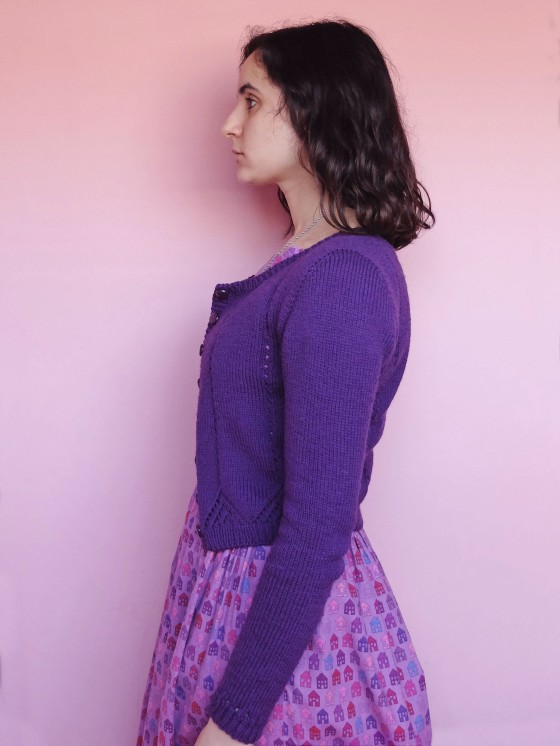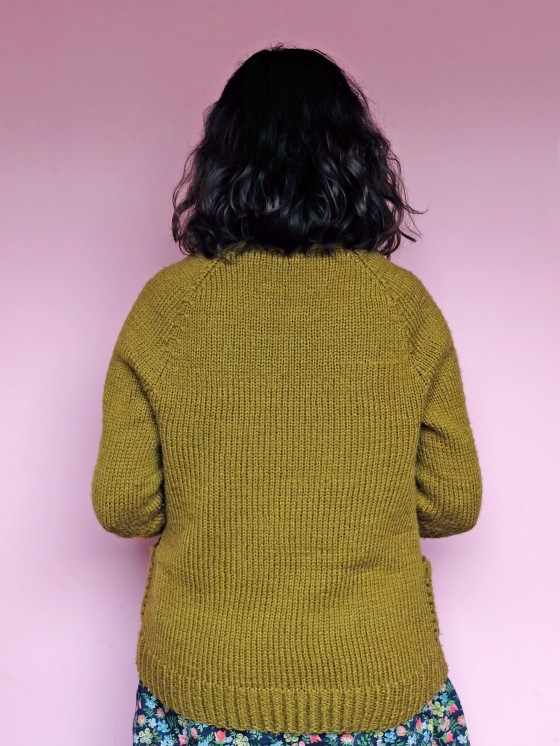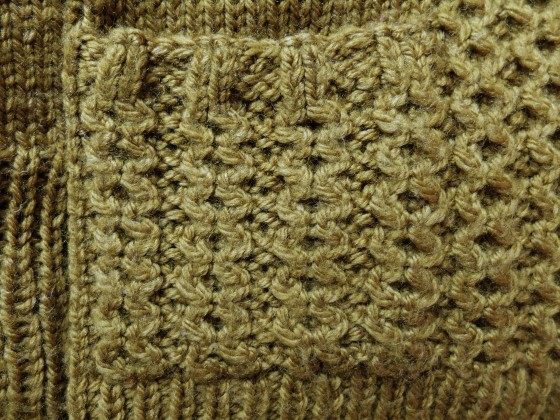 I made this jacket almost a year ago and it took me that long to write about it, which might be a new record on this blog! There are three even older creations I haven’t shown here yet, two Ondée tops I don’t intend on blogging about in detail (but which should still appear in future blog posts) and Monsieur’s jacket, which I definitely want to write an article about; I “just” need to take pictures of him wearing it!
I made this jacket almost a year ago and it took me that long to write about it, which might be a new record on this blog! There are three even older creations I haven’t shown here yet, two Ondée tops I don’t intend on blogging about in detail (but which should still appear in future blog posts) and Monsieur’s jacket, which I definitely want to write an article about; I “just” need to take pictures of him wearing it!
The scarf I’m wearing in the first picture is a simple garter stitch scarf I finished knitting in May. It’s such a simple project it doesn’t deserve a post of its own, but I like keeping track of everything I make, so I did want it to at least appear on the blog. The yarn I used is a cotton and silk blend called Florine, by Veritas. It was my first time trying one of their new yarns, and I loved it! It was nice to work with and the finished scarf is delightfully soft. It was too warm to wear when I finished it, but it’s just the right warmth for the weather we’ve been having in September. I guess that’s all I have to say about this incredibly basic project. Except that it was incredibly boring to knit, too: eighty stitches x more than two metres of garter stitch, yaaaaawn!
 Now for the juicy part, my Lupin jacket! I finished it at the start of last autumn and it’s proven to be the perfect autumn/spring jacket, the one I reach for whenever it’s not cold enough for my rain jacket. Although I did hope it could read as a 1940s jacket, I was not completely sure it would and was especially wary of how it would look with full skirts, especially since I had sized up to get enough room for my shoulders. I must say, I’ve been pleasantly surprised! It also looks really nice with skinny jeans, with my Cardamome dress, with my Zéphyr skirt… Actually, I don’t remember not liking it with an outfit I was wearing; I just wouldn’t wear it with a long cardigan, that’s all.
Now for the juicy part, my Lupin jacket! I finished it at the start of last autumn and it’s proven to be the perfect autumn/spring jacket, the one I reach for whenever it’s not cold enough for my rain jacket. Although I did hope it could read as a 1940s jacket, I was not completely sure it would and was especially wary of how it would look with full skirts, especially since I had sized up to get enough room for my shoulders. I must say, I’ve been pleasantly surprised! It also looks really nice with skinny jeans, with my Cardamome dress, with my Zéphyr skirt… Actually, I don’t remember not liking it with an outfit I was wearing; I just wouldn’t wear it with a long cardigan, that’s all.
I did choose its colour with versatility in mind: I thought grey would look nice with virtually any other colour. It’s the shape I was not so sure about.
 The fabric is a thick cotton satin (but fairly matte) I remember buying on sale at Maison Dorée when I was making this skirt in 2013! I had bought it to make a Pavot jacket but went for this other Deer&Doe pattern instead. It was a bit stressful to work with because it unravelled more than I would have liked, which made sewing the welt pockets a touch tricky, but far from insurmountable. I forgot to take a close-up picture of the pockets, but you can see them in the next picture (and I did share a close-up on my Instagram while I was making the jacket):
The fabric is a thick cotton satin (but fairly matte) I remember buying on sale at Maison Dorée when I was making this skirt in 2013! I had bought it to make a Pavot jacket but went for this other Deer&Doe pattern instead. It was a bit stressful to work with because it unravelled more than I would have liked, which made sewing the welt pockets a touch tricky, but far from insurmountable. I forgot to take a close-up picture of the pockets, but you can see them in the next picture (and I did share a close-up on my Instagram while I was making the jacket):
 All in all, sewing the Lupin jacket was much more straightforward than I would have thought. I followed the instructions and, sewing it step by step over a little bit more than a week, got a nice looking finished jacket if I do say so myself.
All in all, sewing the Lupin jacket was much more straightforward than I would have thought. I followed the instructions and, sewing it step by step over a little bit more than a week, got a nice looking finished jacket if I do say so myself.
My favourite part might be the lining. It’s a cotton lawn I got at our first ever fabric swap, once again in 2013! I had already used a small piece to line the waistband and pockets of a skirt. It’s really soft and I love the small floral pattern. I also love the buttons I put on the epaulettes, antique Belgian military buttons I bought at the same time as the ones I put on my Quart coat (I bought a whole box of various antique Belgian military buttons at the time):
 There are two small things I would change if I ever were to sew another Lupin jacket. The first one would be to lengthen the sleeves by one or two centimetres. Their length seems right when I stand with the arms along the body, but when I raise my arms (to hold the handlebar of my bike for example), they start to feel a bit short. It’s something I’ve been noticing with all of my jackets (bar one, the Minoru jacket, whose sleeves are unusually long), so it’s not that the Lupin sleeves are too short; it’s just either personal preference or I have monkey arms (or both), in any case something I should keep in mind for any future jacket/coat I make!
There are two small things I would change if I ever were to sew another Lupin jacket. The first one would be to lengthen the sleeves by one or two centimetres. Their length seems right when I stand with the arms along the body, but when I raise my arms (to hold the handlebar of my bike for example), they start to feel a bit short. It’s something I’ve been noticing with all of my jackets (bar one, the Minoru jacket, whose sleeves are unusually long), so it’s not that the Lupin sleeves are too short; it’s just either personal preference or I have monkey arms (or both), in any case something I should keep in mind for any future jacket/coat I make!
The second and last thing I would change is also pretty simple: I would add a hanging loop. It’s something I feel is missing every time I hang the jacket, and it would be such an easy addition, I’m sort of kicking myself for not thinking of adding one beforehand! Like lengthening the sleeves, it’s something I should always keep in mind when sewing outerwear.
 Except these two small imperfections, I don’t have anything bad to say about this jacket. Other than not being sure the shape would look right with full skirts, another thing I was wary about was the fact that there are no closures. And, well, the fact that I didn’t even think about it anymore until I started to write this blog post most means that no, this jacket definitely doesn’t need any closures!
Except these two small imperfections, I don’t have anything bad to say about this jacket. Other than not being sure the shape would look right with full skirts, another thing I was wary about was the fact that there are no closures. And, well, the fact that I didn’t even think about it anymore until I started to write this blog post most means that no, this jacket definitely doesn’t need any closures!
I always procrastinate on sewing outerwear (I mean, even more than usual), but I really shouldn’t: it does require more work than sewing “normal” clothing, but the satisfaction is proportional since you get to wear each piece of outerwear so much more than the rest of your clothes!

Enregistrer
 This cardigan is almost one year old. I finished it right before last spring, which, for such an autumn coloured sweater, was maybe not the greatest idea. I was just starting to crave pastel and other spring hues, so it felt like I wouldn’t want to wear that cardigan a lot.
This cardigan is almost one year old. I finished it right before last spring, which, for such an autumn coloured sweater, was maybe not the greatest idea. I was just starting to crave pastel and other spring hues, so it felt like I wouldn’t want to wear that cardigan a lot.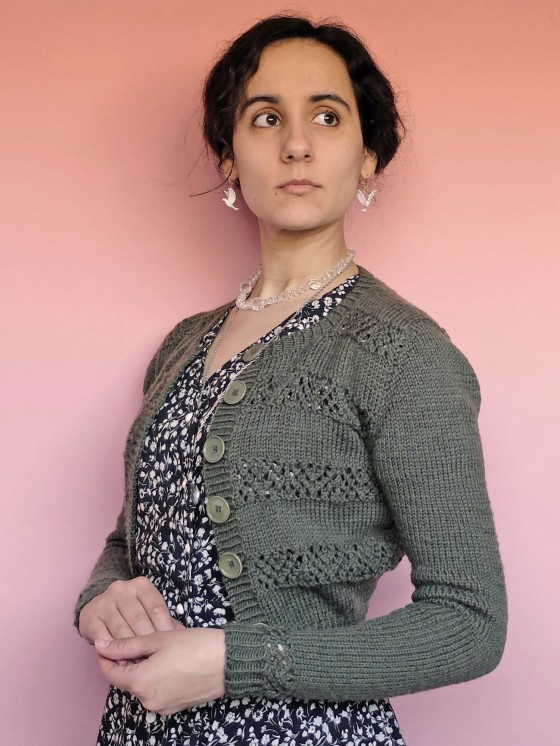 But strangely I did wear it a lot, and I didn’t even wait for September for that. I say strangely, but I guess the ever fall-like Belgian weather must have helped quite a lot.
But strangely I did wear it a lot, and I didn’t even wait for September for that. I say strangely, but I guess the ever fall-like Belgian weather must have helped quite a lot. I had bought the yarn (Drops Karisma, colour #57 olive) for this sweater in 2014, at my beloved local yarn shop, which has since closed. I had another much longer sweater in mind at the time, but when I decided to knit the Wainthropp cardigan, I didn’t want to buy any yarn unless I didn’t have anything suiting it in my stash. So I said goodbye to the long sweater and opted for the safest bet, yet another Andi Satterlund sweater, my eleventh if I’m not mistaken! 😀
I had bought the yarn (Drops Karisma, colour #57 olive) for this sweater in 2014, at my beloved local yarn shop, which has since closed. I had another much longer sweater in mind at the time, but when I decided to knit the Wainthropp cardigan, I didn’t want to buy any yarn unless I didn’t have anything suiting it in my stash. So I said goodbye to the long sweater and opted for the safest bet, yet another Andi Satterlund sweater, my eleventh if I’m not mistaken! 😀 I modified the button and neck bands: I didn’t like the garter stitch ones of the pattern, so I changed them for twisted ribs, matching the waistband and sleeve cuffs. As usual, I wrote down the details on Ravelry. The buttons are from my stash, once again salvaged from an old garment by my mother.
I modified the button and neck bands: I didn’t like the garter stitch ones of the pattern, so I changed them for twisted ribs, matching the waistband and sleeve cuffs. As usual, I wrote down the details on Ravelry. The buttons are from my stash, once again salvaged from an old garment by my mother.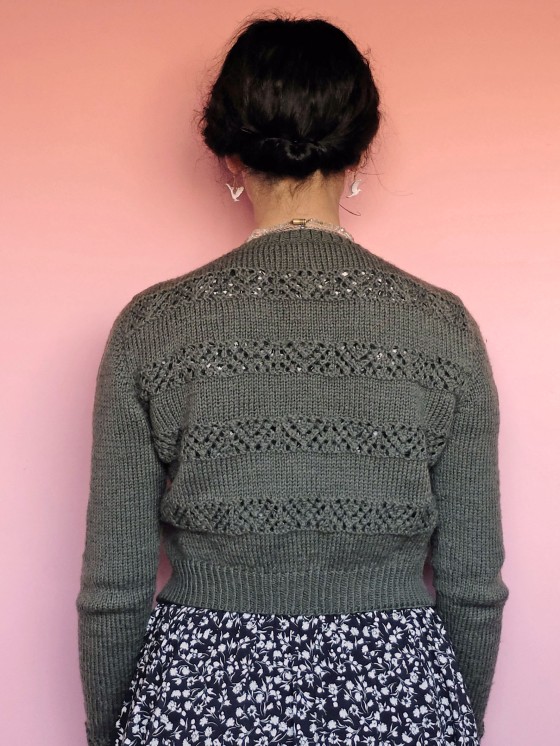 What more can I write about this cardigan from a designer I’m used to, knit in a yarn I’m used to? No much I guess, except that I’ve recently realised that, weirdly, I have a tendency to knit cardigans in fairly dull colours. It’s particularly obvious when you see them all together. My only bright cardigan was this one, but I’ve just got rid of it because it was too worn and damaged. It’s strange because I think of myself as someone who loves colour and is not afraid to wear bright colours even in winter, yet my sweater shelf says otherwise. Something to keep in mind the next time I buy some yarn!
What more can I write about this cardigan from a designer I’m used to, knit in a yarn I’m used to? No much I guess, except that I’ve recently realised that, weirdly, I have a tendency to knit cardigans in fairly dull colours. It’s particularly obvious when you see them all together. My only bright cardigan was this one, but I’ve just got rid of it because it was too worn and damaged. It’s strange because I think of myself as someone who loves colour and is not afraid to wear bright colours even in winter, yet my sweater shelf says otherwise. Something to keep in mind the next time I buy some yarn!






























